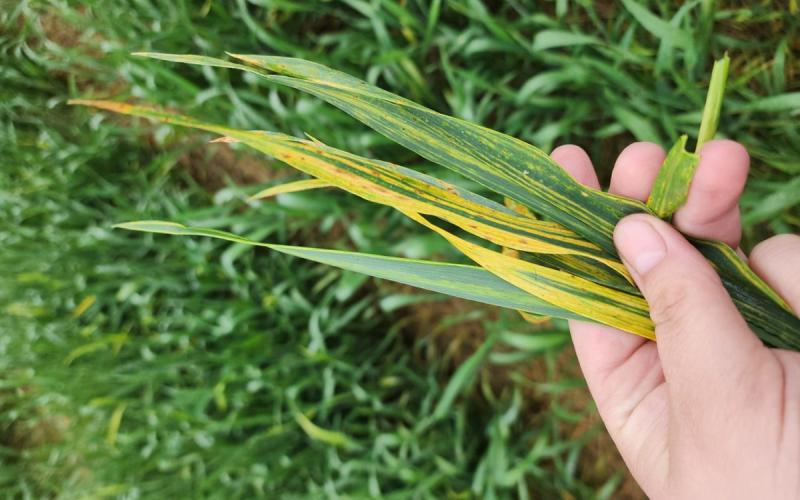
Originally written by Emmanuel Byamukama, former SDSU Extension Plant Pathologist, Shaukat Ali and Sunish Kumar.
A few winter wheat fields were found with bacterial leaf streak (BLS) starting to develop at low levels (Figure 1). BLS is usually observed starting from flag leaf growth stage and can be severe on the upper leaves, when there is prolonged leaf wetness resulting from frequent rains. Symptoms start as small brown to dark brown, water-soaked lesions limited within the veins. These can coalesce to form large necrotic areas on a wheat leaf (Figure 1).
Causal Agent and Symptoms
Bacterial leaf streak is caused by a bacterium called Xanthomonas translucens pv undulosa. The bacteria survive primarily on and in the seed but also on crop residue and in the soil. The bacteria can survive on the plant surface without causing disease until weather conditions are conducive for infection to take place. The bacteria are spread from one plant to another mainly by rain splash. The bacteria enter the plant through wounds (caused by high winds or insect feeding) and natural openings.
Management
Because the bacteria are primarily disseminated through seed, planting certified, pathogen-free seed is the most effective management strategy for bacterial leaf streak. Unfortunately, there are no seed treatment products available for managing this disease. Also, crop rotation may help to reduce the inoculum level or plant BLS tolerant varieties. SDSU Wheat Breeding Programs have varieties that are moderately resistant to BLS. For BLS rating of wheat cultivars, see the latest Winter Wheat Variety Trial Results.

